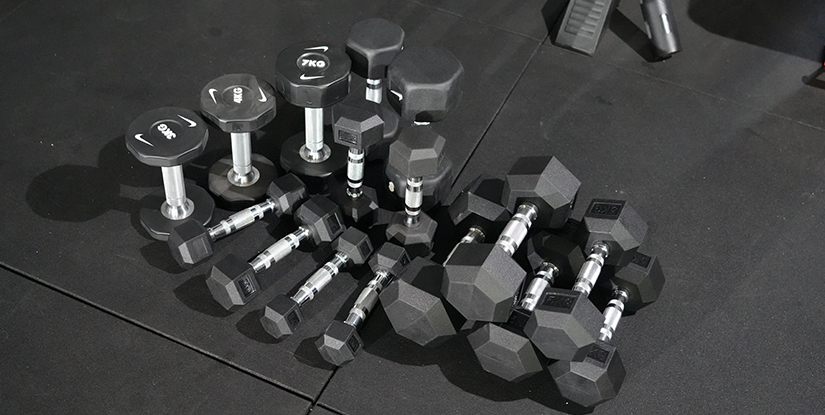Small Fitness Equipment: Guide to Choosing & Using Home Gear

Overview of Small Fitness Equipment
Small fitness equipment provides a practical, cost-effective way to build strength, improve mobility, and sustain cardiovascular health in limited spaces. For individuals, trainers, and small studios, compact gear such as dumbbells, kettlebells, resistance bands, and balance trainers deliver measurable results without the footprint or expense of full-sized machines.
Key Categories
Dumbbells and adjustable weights: versatile for progressive overload and unilateral work.
Kettlebells and medicine balls: ideal for dynamic power and rotational strength exercises.
Resistance bands and tubing: portable, scalable tension for rehabilitation and full-range strength training.
Suspension trainers and straps: use bodyweight to target stability, core integration, and functional movement.
Small cardio tools: jump ropes, mini steppers, and compact air bikes for high-intensity interval training (HIIT).
Balance and mobility aids: foam rollers, balance pads, and massage tools to support recovery and proprioception.
Benefits of Compact Gear
Small fitness equipment offers several advantages: affordability, portability, minimal storage needs, and adaptability for varied fitness levels. Because many of these tools target functional movement patterns, they translate well to everyday performance and sport-specific demands. For professionals, small equipment enhances session variability and client progression without requiring significant capital investment.
How to Choose the Right Equipment
Selection requires aligning equipment attributes with training goals, space constraints, and user ability. Consider the following criteria:
Purpose: strength vs. endurance vs. mobility.
Progression: choose adjustable or incremental loads to support long-term improvement.
Durability: materials and construction influence lifespan—rubber-coated dumbbells and reinforced bands are preferable.
Safety features: non-slip grips, secure anchors for suspension trainers, and proper labeling for band tensions.
Space: measure workout area and storage options before purchase.
Maintenance and Longevity
Proper maintenance preserves performance and safety. Wipe down equipment after use, inspect bands and straps for fraying, and store metal weights in dry environments to prevent corrosion. Follow manufacturer recommendations for replacement intervals, especially for elastic and webbed components that degrade with UV exposure and repeated loading.
Designing Effective Workouts
Small equipment enables comprehensive programming. A few structured examples:
Strength micro-session (20 minutes): adjustable dumbbells, 3 sets of 8–12 reps (squat press, Romanian deadlift, bent-over row, overhead press).
Cardio + conditioning (15 minutes): jump rope 1 min, kettlebell swings 30 sec, rest 30 sec; repeat 6 rounds.
Mobility and recovery (10–15 minutes): foam rolling lower back, band-assisted shoulder mobility, hip CARs with resistance band assistance.
Space Optimization and Storage
Effective storage extends usability in small environments. Use wall racks for weights, compact shelving for bands and rollers, and foldable benches to maximize floor area. Label and categorize items to streamline session setup and turnover between clients.
Buying Tips and Specifications
When procuring small equipment, verify warranty, user reviews, and third-party testing where available. For commercial settings, prioritize commercial-grade products with reinforced handles and thicker coatings. For home users, price-to-durability balance and return policy flexibility matter most.
Safety and Certification
Safety is paramount. Ensure that elastic tools meet tensile and elongation standards, and that weights conform to tolerance specifications. Follow safe programming principles: warm up, progress loads conservatively, and maintain movement quality. For clients with medical conditions, consult healthcare professionals prior to equipment-based training.
Integration into Professional Programs
Small fitness equipment is valuable to coaches and therapists for targeted interventions. Bands facilitate eccentric control for tendinopathy protocols; kettlebells support power development for athletes; and suspension training is effective for retraining core stability in rehabilitation contexts. Document load, tempo, and perceived exertion to measure adaptation and adjust prescriptions.
Conclusion
Small fitness equipment delivers scalable, efficient solutions for diverse training needs. With informed selection, proper maintenance, and considered programming, compact tools support long-term performance, recovery, and adherence—whether in a private home, boutique studio, or clinical setting.
FAQs
Q: What is the most versatile small fitness tool?
A: Adjustable dumbbells and resistance bands offer the widest range of exercises and intensities.
Q: How often should bands be replaced?
A: Inspect them regularly; replace at first sign of cracking or excessive loss of elasticity, typically every 6–18 months depending on use.
Q: Can small equipment build significant strength?
A: Yes—progressive overload with appropriate resistance and volume produces measurable strength gains.
Q: Are kettlebells suitable for beginners?
A: Yes, with instruction on technique; start with light weights and focus on hinge mechanics.
Q: How much space do I need for a home setup?
A: A clear area of 2 x 2 meters accommodates most small-equipment workouts safely.
Q: What maintenance is required for dumbbells?
A: Keep them clean, dry, and stored off the floor; tighten adjustable mechanisms as needed.
Q: Are suspension trainers safe for older adults?
A: Yes, when programmed appropriately and anchored securely; prioritize balance and controlled progressions.
Q: Should I buy commercial-grade gear for home use?
A: Not required, but commercial-grade offers greater durability if used frequently or by multiple users.
Q: How do I choose resistance band tension?
A: Match tension to movement and strength—lighter bands for mobility, medium to heavy for strength and power work.

